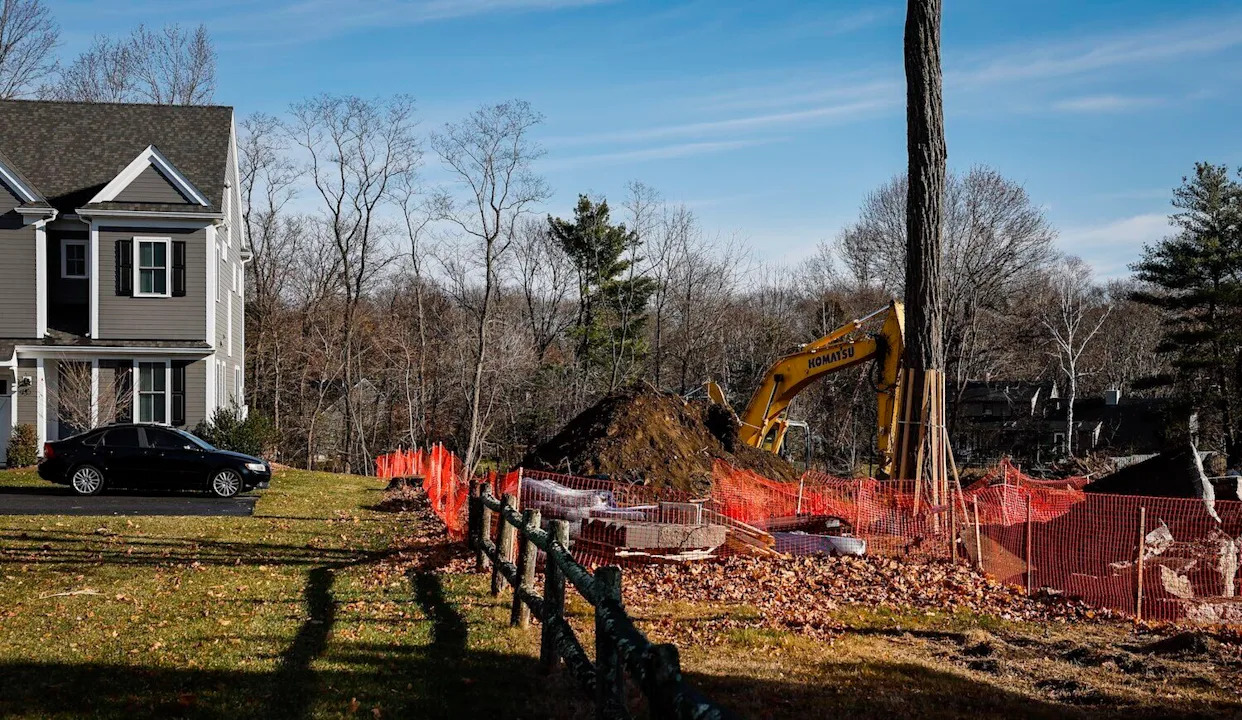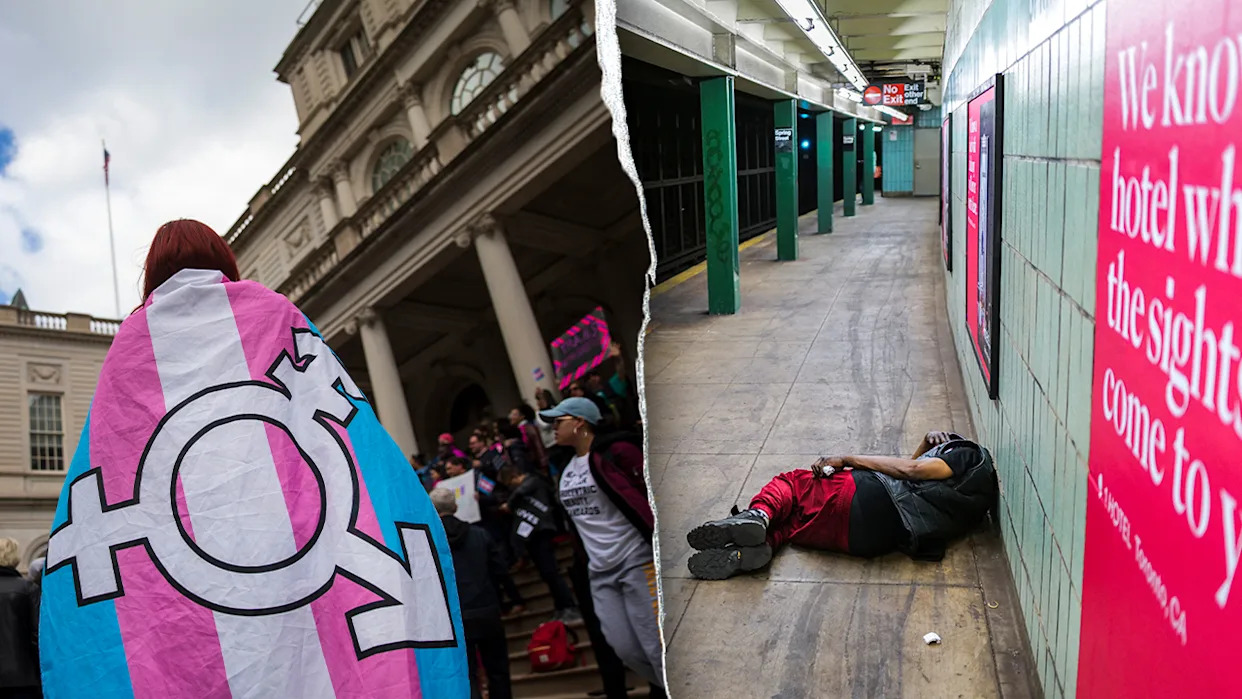
A surge of housing development in a Boston suburb is providing evidence that natural-gas bans and strict energy-efficiency standards do not slow new construction or make it more expensive. Indeed, these guidelines can even boost the growth of affordable housing, say local advocates.
In 2024, Lexington, Massachusetts, banned gas hookups in new construction and adopted a stringent building code that requires high energy-efficiency performance. Yet these regulations have not stopped the town of roughly 34,000 from permitting some 1,100 new units of housing — 160 of which will be affordable — over the past two years.
“Opponents said, ‘It’s going to cost so much, you’re going to stop the development of affordable housing.’ But that clearly wasn’t the case,” said Mark Sandeen, a member of the town select board and the board of the Lexington Affordable Housing Trust.
As Massachusetts aims to get to net-zero carbon emissions by 2050, the state has for several years prioritized policies that encourage the transition away from fossil fuels, particularly natural gas, which heats about half of the state’s homes. In 2022, Massachusetts launched a pilot program allowing 10 communities — including Lexington — to prohibit the use of fossil fuels in new construction and major renovations. In late 2023, utilities regulators issued an order that makes explicit the state’s goal of getting off natural gas, and lays out strategies and principles for reaching this goal.
Detractors, however, have consistently argued that requiring or even heavily encouraging all-electric construction would make housing more costly and difficult to build at a time when Massachusetts is facing an acute housing shortage. In 2022, then-Gov. Charlie Baker, a Republican, memorably said the idea of fossil fuel bans gave him “agita,” so worried was he that such municipal regulations would suppress housing growth.
Similar battles have played out across the country, from California to New York.
There is plenty of evidence that electrified, highly efficient homes don’t need to come with a price premium.
A 2022 study by think tank RMI found that, in Boston, all-electric homes are slightly less expensive both to build and to operate than mixed-fuel homes — and that was before Massachusetts’ investor-owned utilities adopted lower wintertime rates for homes with heat pumps. In 2023, Massachusetts-based advocacy group Built Environment Plus found that building larger multifamily and affordable housing developments “net-zero ready” — that is, highly efficient and with all-electric heating — costs about 4% less up front than the conventional approach.
A sustainable housing surge in Lexington
After Lexington changed its zoning rules in 2023 to allow more multifamily development, its energy regulations did not, as naysayers had feared, deter developers from taking advantage. The planning board has approved nine projects, ranging from a proposal to redevelop an unused commercial space into a seven-unit building, to a complex combining 312 residential units with 2,100 square feet of retail space.
The new construction will include both rental units and condos available to purchase that will, in total, increase available housing in town by 9%. Much of the new housing will be market-rate, and Lexington — where the median condo went for $915,000 in the first quarter of 2025 — is not an inexpensive place to live.
However, most of the construction driven by the new zoning is required to make 15% of its units affordable. On top of these private projects, the town has decided to develop a municipally owned property into a 40-unit affordable housing development, bringing the total number of affordable units on the horizon to about 200.
The municipal project will include four residential buildings designed to be energy-efficient and to minimize the square footage of halls and other common areas, which will reduce the cost of heating and cooling these spaces. Solar panels on the roofs will offset the electricity consumed by the building’s heat pumps, said Dave Traggorth, principal with Causeway Development, the company chosen to develop the property.
“Ultimately, what the tenant is paying for in their electric bill is really just cooking and lights,” he said. “It really reduces the utility bills for residents.”
All of these new projects — market-rate and affordable — will be prohibited from using fossil fuels to run furnaces or other appliances because of the town’s requirement that new construction be fully electric.
The town has also adopted an optional, more rigorous version of the state building code that requires new, multifamily projects over 12,000 square feet — which applies to most of those in the pipeline in Lexington — to build to passive house standards, which require a very well-sealed building envelope and dramatically reduced energy use compared to a conventionally built structures.
“This is what you can do at the local level,” said Lisa Cunningham, cofounder of climate advocacy organization ZeroCarbonMA.
While Lexington is a particularly active town, the other nine communities that have banned fossil fuels in new construction have all reported that the rules have posed no obstacle to development, Cunningham said. Restrictive zoning and antidevelopment sentiment among residents are much more pressing problems, she said.
For the eventual residents, the benefits go beyond the knowledge that their homes are helping cut emissions. Homes designed to passive house standards use far less energy than those that are conventionally built, creating ongoing savings for homeowners and tenants, and have been found to generally have better indoor air quality. When the power goes out, these well-sealed buildings can keep interior temperatures comfortable for days.
Paving the way for electrification
It is no accident that residential developers were ready to jump when opportunities opened up in a town with stringent efficiency and electrification rules. Massachusetts has been laying the groundwork for years, said Lauren Baumann, director of sustainability and climate initiatives for the Massachusetts Housing Partnership, a nonprofit that works to expand affordable housing.
“There has been this deliberate effort to develop an ecosystem to support this kind of construction,” she said.
In 2019, the Massachusetts Clean Energy Center awarded $1.73 million in grants to eight affordable, multifamily projects to help accelerate the adoption of passive house standards in multifamily construction by demonstrating that the approach makes financial sense. That same year, the state’s energy-efficiency program administrator, Mass Save, launched an initiative offering money to multifamily projects for feasibility studies, energy modeling, and analyses of post-construction energy performance.
These incentives gave architects and contractors a lower-risk way to become familiar with a new approach to building. And familiarity, in this case, bred knowledge, skills, and enthusiasm.
“Those early project pilots really did give people the experience they needed in order to feel comfortable,” Baumann said. “We just saw an explosion of interest.”
Traggorth has seen this evolution in his work. Five years ago, he said, if he approached a contractor to discuss building to passive house standards, he was often greeted with confusion. Now, “every contractor that’s building multifamily has a couple of projects that have been passive house certified,” he said. “They have learned their lessons.”








Comments